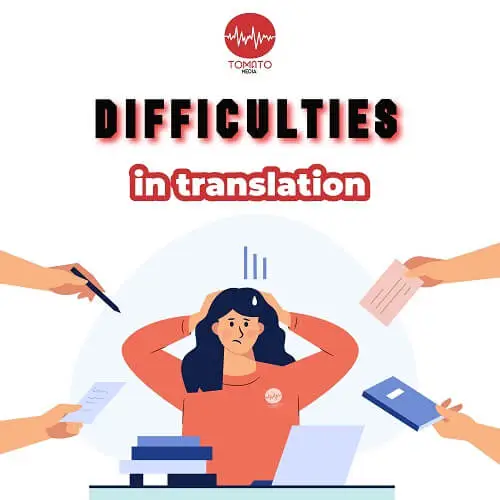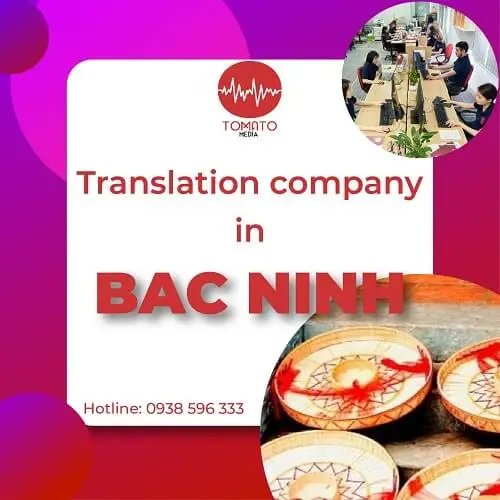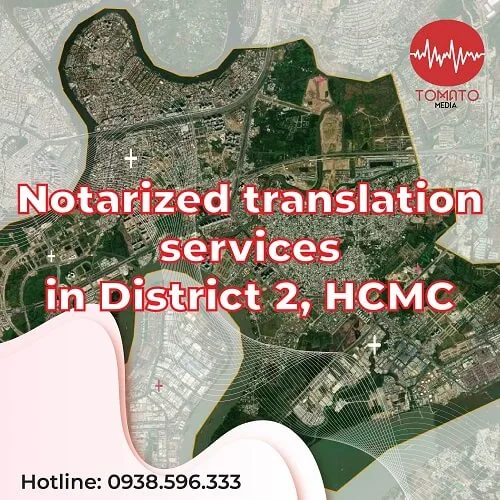The translation profession offers many opportunities but also comes with many challenges. Language differences present challenges in translation, necessitating a deep understanding of both languages and cultures on the part of the translator. Tomato Media is a professional, high-quality multilingual translation company. If you need translation services, contact us immediately! ✆ 0938596333 ✉ CONTACT US [...]
Do you know the world’s top 9+ easiest languages to learn?
It is a fact that the number of languages spoken worldwide is 35 times greater than the number of countries in the world. Do you know which languages are the easiest to learn in the world? In addition to English, many other languages are also ranked among the easiest in the world to learn. We will learn about the world’s easiest-to-learn languages in this article.
NỘI DUNG (CONTENT)
How many languages are there in the world?
Before we learn which the easiest language to learn in the world is, let’s find out the number of languages in the world today and their general status. There are currently more than 200 countries and 7,000 languages spoken throughout the planet.
Language is an extremely complex system used by humans to communicate and transmit information. Finding the number of languages in the world today is difficult because it is possible that there are many inaccessible, mysterious groups or clans that speak a language of their own. So instead of saying, “How many languages are there in the world?” “How many languages are known in the world today?”
The number of 7,000 languages is a huge number. And just like animals, plants, and humans, language is unevenly distributed around the world. Currently, the number of languages is decreasing due to some languages facing extinction.
What makes a language easy to learn?
As stated, there are many languages in the world with different characteristics and histories of formation and development. But some of them will be easier to learn than others. This is only relative because the language can be easy to learn with one person but difficult to learn with another, and vice versa. It comes from the learner’s mother tongue. People are often more receptive to languages that have a lot in common with their mother tongue.
Furthermore, for those with a language-sensitive mindset, it is easier to acquire a new language than for those without a language-sensitive mindset. What makes a language easy to learn?
- Similarities between the new language and the learner’s mother tongue
- Number of the vocabulary of the new language
- Grammar system of the new language
- Pronunciation of the new language
Compilation of the world’s easiest languages to learn
What are the world’s easiest languages for Vietnamese speakers to learn? Here, we will list the world’s easiest languages for Vietnamese speakers to learn and the seasons
➤ ➤ Languages similar to Vietnamese
For language learners, the more a language has similarities to their native language, the easier it is to learn. Therefore, languages that are similar to Vietnamese are the easiest to learn.
Languages similar to Vietnamese are those that use the Latin alphabet or have a similar sentence structure. In addition, the similarity in pronunciation makes it easier to learn, particularly Thai. Languages related to Chinese are also considered easy to learn for Vietnamese speakers. As Vietnamese itself is influenced by a lot of Chinese words, the most obvious are loanwords.
1. English
English is not only one of the world’s easiest languages to learn, it is also the world’s most popular language, with over 500 million users. English is used by countries such as England, the USA, Australia, New Zealand, Zimbabwe, the Caribbean, Hong Kong, South Africa and Canada as the primary language.
- For Vietnamese speakers, English is the second foreign language taught in all schools, and the popularity of the language has spread nationwide. English is an easy language to learn for Vietnamese speakers because it uses the Latin alphabet and its grammar system is quite simple and easy to understand.
- The obstacle that many people encounter when learning English is probably vocabulary. This is one of the languages with the largest number of words in the world.
2. French
French is also one of the easiest languages to learn in the world for Vietnamese because it shares many similarities with English. Vietnamese people can easily learn this language because it uses the same alphabet, Latin.
- French is one of the most important and popular languages in the world, widely spoken in Europe, namely countries such as France, Belgium, Switzerland, and African countries (Cameroon, Gabon, Côte d’Ivoire), Luxembourg, Monaco, and the Congo.
- French is considered the most intelligent, romantic, and flexible language in the world. When learning French, Vietnamese will have an advantage in pronunciation and listening comprehension because the French pronunciation is easy to distinguish. French is closely related to other romantic languages such as German and Spanish. Therefore, when you learn French, you will also easily master German or Spanish.
- One of the biggest difficulties for French learners is vocabulary. French has a rich vocabulary of about 270,000 words, many of which make it easy for learners to get confused.
3. Swedish
Swedish is considered one of the easiest languages to learn in the world because it has a fairly simple grammar system and many words similar to English as these two languages share the same language family, German. The word order in the sentence is also arranged simply and tightly, making it receptive to people with good English backgrounds.
- The most widely spoken language in northern Germany today is Swedish, which has its origins in that region.
- Not only is Swedish the main language, but Swedish is also used as the main language in Finland. Some parts of England, the United States, Spain, and Norway also have a large number of Swedish speakers because they are mostly Swedish migrants.
4. Norwegian
Sharing the same language family as English, Norwegian is arguably one of the easiest languages to learn in the world, even easier than English.
- The Norwegian grammar system is quite simple, and the vocabulary is significantly similar to English.
- The language is spoken mainly in Norway and places where Norwegians live, for example, the United States.
5. Portuguese
Considered one of the easiest languages to learn in the world, Portuguese has become the official language of many countries, including Portugal, Brazil, and more than seven other countries. There are more than 235 million Portuguese speakers, of whom more than 215 million use it daily.
- Portuguese is the “brother” of Spanish, a language closely related to English. Portuguese is a good choice for Vietnamese speakers looking to learn a new, easy-to-learn language because it has a Latin alphabet and simple sentence structures.
- A special feature of Portuguese is that to create a question, you just need to take the declarative sentence and raise your voice at the end of the sentence.
6. Dutch
Dutch originated in West Germany and is currently one of the most widely spoken languages in Europe. Dutch is the main language of the Netherlands and many other countries, such as Belgium, Aruba, Bonaire, Curaçao, and Suriname, and is also spoken by a minority in Indonesia. It is also the second language in many countries. After standard German and English, it is the third most widely spoken German form in the world.
- Much of the Dutch vocabulary is related to German and borrows heavily from romantic languages such as French. For those with an English-speaking background, it is regarded as the world’s easiest language to learn.
- The hardest thing when approaching Dutch is pronunciation. It is still believed that reading the word “Scheveningen” can reveal whether or not a person is a native speaker.
7. Swahili
Swahili is a Bantu language commonly spoken by residents living near the Indian Ocean coast. Swahili is influenced by Arabic, English, French, German, and Portuguese.
- Swahili is spoken by four countries as an official language: Tanzania, Kenya, Uganda, and the Democratic Republic of the Congo.
- There are more than 140 million people who speak Swahili, and almost everyone in East Africa uses Swahili to communicate. Swahili is the second-most common language in Africa after Arabic.
➤ ➤ Languages with simple pronunciation
The pronunciation factor is also an important factor to assess whether the language is easy to learn or not. In terms of pronunciation alone, the world’s arguably easiest languages include:
1. Spanish
Within the Latin language family, Spanish is considered an easy language to pronounce. Spanish has the same pronunciation as Vietnamese, i.e., every letter has only one sound.
The following is the pronunciation of some syllables in Spanish:
- Vowel “a”: pronounced as” a ” in Vietnamese
- Vowel “i”: pronounced as” i ” in Vietnamese
- Vowel “o”: pronounced as “ô” in Vietnamese
- Vowel “u”: pronounced as “u” in Vietnamese
- Vowel “e”: pronounced as “ê” in Vietnamese
- etc.
2. Italian
Italian is considered the easiest language to learn in the world because the Italian pronunciation is extremely simple. The syllables are pronounced separately, like in Japanese, but there are no combinations of letters to create new sounds. Here are a few pronunciations of Italian vowels and consonants:
- “a” is pronounced as “a” in Vietnamese
- “e” is pronounced as two sounds: “ey” or “e”
- “i” is pronounced as “i” in Vietnamese
- “o” is pronounced as two sounds: like “ô” or “o”
- “u” is pronounced as “u” in Vietnamese
- b, d, f, l, m, n, p, t, v are pronounced the same as in Vietnamese.
- The letter “c,” when standing before a, o, u, and before consonants, is read like the letter “c” in Vietnamese. If “c” stands before e or i, it is read like “Ch” in Vietnamese.
- etc.
3. Japanese
The pronunciation in Japanese is quite simple. In Japanese, there are 5 vowels u, e, o, a, i, pronounced as ư, ê, ô, a, i, respectively. Other sounds are formed by pairing k, s, m, n, etc. in front of those vowels.
Similar to Spanish, Japanese has a relatively easy pronunciation. Vietnamese people thus may find it simpler to understand this language by listening to it. However, the alphabet, including kanji, is a major obstacle for Japanese learners.
Is the world’s easiest-to-learn language easy to translate?
Language is not only a means of communication, but it also reflects the culture of the people who use it. Therefore, the nature of language is complex. Any language, even the easiest language in the world to learn, has a difficult side and an easy side. There are languages with complicated grammatical structure but easy pronunciation or vice versa, there are also languages that are easy in both grammatical structure and pronunciation but are complicated in that the meaning layers of words, etc.
The translation is the process of translating both sentences and cultural semantics. Therefore, it is impossible to rely on a few points to assess whether the language is easy to translate or not. Translation, in addition to language skills, requires a lot of other skills.
Hopefully, this article has provided readers with basic information about the easiest languages to learn in the world.
You need translation services from commonly spoken languages (English, Chinese, Japanese, Korean, etc.) into rare languages such as Myanmar, Taiwan, Arabic, etc. Please contact Tomato so that we can work together on multinational projects.
Tomato multilingual translation – including the world’s easiest languages to learn
At Tomato, we provide document translation, notarized translation, interpretation, media translation, and multilingual localization, including the world’s easiest languages to learn.
| English | French | Arabic | |||
| Chinese | Taiwanese | Spanish | |||
| Japanese | German | Czech | |||
| Korean | Thai | Dutch | |||
|
Italian |
Russian |
Khmer |
|||
| Burmese |
Finnish |
➩ | … |
The main services at Tomato include:
Interpretation services
- 🏳️ Consecutive interpretation
- 🏳️ Accompanying interpretation
- 🏳️ Whispered interpretation
- 🏳️ Remote interpretation, interpretation services over the phone – video call, etc.
- 🏁 On-site interpretation
- 🏁 Project interpretation
- 🏁 Factory – workshop interpretation
- 🏁 Fair – exhibition interpreting
- 🏁 Conference – seminar interpreting
- 🏁 Negotiation interpretation
- 🏁 Court interpretation
- 🏁 Technology transfer interpretation
- 🏁 Market research interpretation
Translation services
- 💈 Notarized translation of study abroad application
- 💈 Notarized translation of visa application
- 📃 Document translation
- 📃 Specialized translation
- 📃 Translation of export and import documents
- 📃 MSDS document translation
- 📃 Translation of theses & academic documents
- 📝 Translation of company profile
- 📝 Translation of financial statements
- 📝 Accounting document translation
- 📝 Contract translation
- 📝 Bid document translation
- 📖 Translation of books, newspapers – magazines
- 📰 Translation of DTP – desktop publishing
Localization services
- ⚙️ App localization
- ⚙️ Software localization
- ⚙️ Website localization
- ⚙️ Video localization
Media translation
- 📹 Translation & Dubbing
- 📹 Translation & voice-over
- 📋 Subtitling
- 📋 Movie/Video Translation
- 📋 Audio & video transcription
- 📋 Script translation
If you need one of our above services with the appropriate language option, please contact Tomato Media immediately:
Hopefully, the above information about the easiest languages to learn in the world will be helpful to you.































